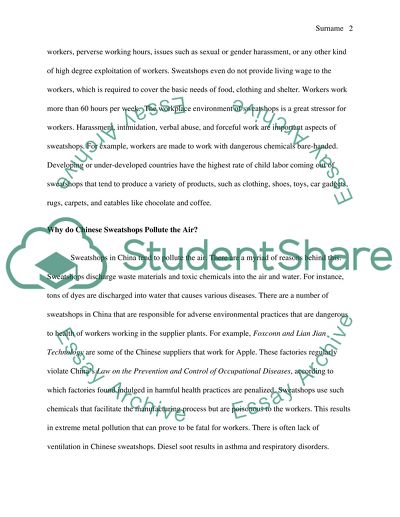Cite this document
(“China sweat factories pollution Essay Example | Topics and Well Written Essays - 2000 words”, n.d.)
Retrieved from https://studentshare.org/social-science/1666150-china-sweat-factories-pollution
Retrieved from https://studentshare.org/social-science/1666150-china-sweat-factories-pollution
(China Sweat Factories Pollution Essay Example | Topics and Well Written Essays - 2000 Words)
https://studentshare.org/social-science/1666150-china-sweat-factories-pollution.
https://studentshare.org/social-science/1666150-china-sweat-factories-pollution.
“China Sweat Factories Pollution Essay Example | Topics and Well Written Essays - 2000 Words”, n.d. https://studentshare.org/social-science/1666150-china-sweat-factories-pollution.


